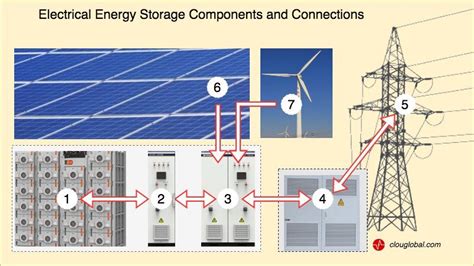Energy connections and power conversion are fundamental concepts in the realm of electrical engineering, playing a crucial role in the efficient transmission and utilization of energy. As the world grapples with the challenges of sustainable energy, understanding these principles is more important than ever. At its core, energy connection refers to the interface between different energy sources, storage systems, and consumption points, while power conversion involves the process of transforming energy from one form to another to meet specific requirements. This article aims to simplify the complexities of energy connections and power conversion, providing an in-depth exploration of their principles, applications, and future directions.
Key Points
- Energy connections are critical for efficient energy transmission and utilization.
- Power conversion technologies are essential for transforming energy into usable forms.
- Renewable energy sources are increasingly integrated into the energy mix, requiring advanced power conversion systems.
- Energy storage systems play a vital role in stabilizing the grid and ensuring a constant energy supply.
- Advancements in power electronics and smart grid technologies are revolutionizing energy connections and power conversion.
Understanding Energy Connections

Energy connections encompass a broad range of technologies and systems designed to facilitate the flow of energy from generation to consumption. This includes transmission lines, distribution networks, and smart grid technologies that enable real-time monitoring and control of energy flow. The efficiency and reliability of energy connections are critical, as they directly impact the overall performance of the energy system. Factors such as line losses, transmission capacity, and grid resilience are key considerations in the design and operation of energy connections.
Power Conversion Principles
Power conversion is the process of altering the form of energy to meet specific application requirements. This can involve converting electrical energy into mechanical, thermal, or chemical energy, or vice versa. The most common types of power conversion include AC-DC conversion, DC-DC conversion, and AC-AC conversion, each utilizing different technologies such as rectifiers, inverters, and transformers. The efficiency of power conversion systems is paramount, as losses during the conversion process can significantly impact the overall energy utilization efficiency.
| Conversion Type | Efficiency Range |
|---|---|
| AC-DC Conversion | 80-95% |
| DC-DC Conversion | 85-98% |
| AC-AC Conversion | 90-99% |

Applications of Energy Connections and Power Conversion

The applications of energy connections and power conversion are diverse and pervasive, impacting various aspects of modern life. In the context of renewable energy, advanced power conversion systems are essential for integrating solar and wind power into the grid, ensuring that the energy generated is in a usable form for consumption. Additionally, energy storage systems, such as batteries, rely on efficient power conversion to charge and discharge energy, stabilizing the grid and providing backup power during outages.
Future Directions
The future of energy connections and power conversion is closely tied to the evolution of smart grid technologies and the integration of renewable energy sources. As the world transitions towards a more sustainable energy mix, the demand for efficient, reliable, and flexible power conversion systems will continue to grow. Advances in power electronics, energy storage, and grid management systems will play a critical role in shaping the future of energy connections and power conversion, enabling the creation of more resilient, efficient, and sustainable energy systems.
What are the primary challenges in energy connections and power conversion?
+The primary challenges include efficiency losses during power conversion, the integration of renewable energy sources into the grid, and the development of advanced energy storage systems to stabilize the grid and ensure a constant energy supply.
How do advancements in power electronics impact energy connections and power conversion?
+Advancements in power electronics, such as the development of wide bandgap semiconductors, significantly enhance the efficiency and performance of power conversion systems, enabling the widespread adoption of renewable energy sources and electric vehicles.
What role do energy storage systems play in the future of energy connections and power conversion?
+Energy storage systems, such as batteries, play a vital role in stabilizing the grid, providing backup power during outages, and enabling the efficient integration of renewable energy sources into the energy mix.
In conclusion, energy connections and power conversion are foundational elements of modern energy systems, underpinning the efficient transmission, conversion, and utilization of energy. As the world continues to evolve towards a more sustainable energy future, the importance of these technologies will only continue to grow, driving innovation and advancement in power electronics, energy storage, and smart grid technologies. By understanding and leveraging these advancements, we can create more efficient, reliable, and sustainable energy systems for generations to come.



